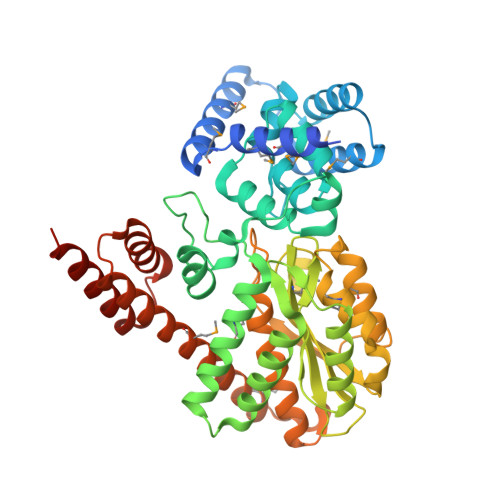Legionella effector LegA15/AnkH contains an unrecognized cysteine protease-like domain and displays structural similarity to LegA3/AnkD, but differs in host cell localization.
Chung, I.Y.W., Li, L., Cygler, M.(2021) Acta Crystallogr D Struct Biol 77: 1535-1542
- PubMed: 34866609
- DOI: https://doi.org/10.1107/S2059798321010469
- Primary Citation of Related Structures:
7KJ6 - PubMed Abstract:
Legionella pneumophila is a human pathogen that causes Legionnaires' disease, a severe form of pneumonia. It can be found in various aquatic environments ranging from cooling towers to ponds. In addition to causing disease in humans, it can also infect free-living amoebae commonly found in various aquatic environments. Once inside a human lung macrophage, it creates a niche called the Legionella-containing vacuole where it can evade phagolysosomal degradation and replicate. During infection, normal cellular functions are hijacked by proteins that are secreted by the pathogen, called bacterial effectors. Here, the structural characterization of the effector LegA15/AnkD is reported. The protein contains an ankyrin-repeat domain followed by a cysteine protease-like (CPL) domain with a putative catalytic triad consisting of His268-Asn290-Cys361. The CPL domain shows similarity to the CE clan in the MEROPS database, which contains ubiquitin-like hydrolases. The C-terminal segment of LegA15, including the CPL domain, shows structural similarity to another effector, LegA3/AnkH, while they share only 12% sequence identity. When expressed in mammalian cells, LegA15 is localized within the cytoplasm, in contrast to LegA3, which localizes to the nucleus.
- Department of Biochemistry, Microbiology and Immunology, University of Saskatchewan, Saskatoon, Saskatchewan, Canada.
Organizational Affiliation:




















